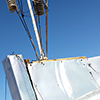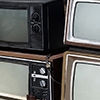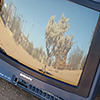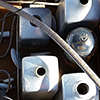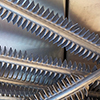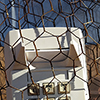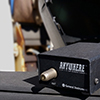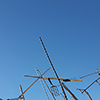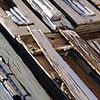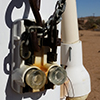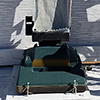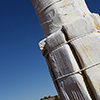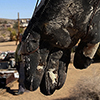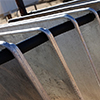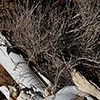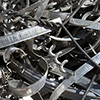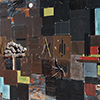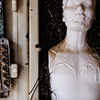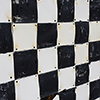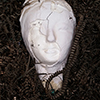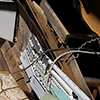24 Fragments of Purifoy
Tom Leeser
Technological change is simply not an independent variable. Technology will advance, and often in surprising and unexpected ways. But the overall direction it takes depends on social factors.
—David Graeber, “The Utopia of Rules—On Technology, Stupidity, and the Secret Joys of Bureaucracy”
Technology is a body, an agent of contingency. It dominates our present as myth, abstraction and remedy. Residing within its body is a phantom, intent on weaving a future of accelerated disruption, complexity and excess. This phantom also plays a simultaneous role as a speculative savior, an antidote to the alienation of our globalized culture.
David Graeber states that technology depends on the social for its direction. It also relies on this dependency for its articulation and power. Through our implicit consent we collectively imbue the phantom with what Graeber calls an “infallible and magical efficiency.” The specter appears to us as pseudo-modernism, a new aesthetic—a pharmakon who haunts the imaginary space between utopia and dystopia.
Noah Purifoy exhumed and transformed technology’s phantom through a creative process of direct activity and making. He built a network of “power-objects” in his remote desert compound in Joshua Tree, California, far outside the urban boundaries of industrial Los Angeles and long before the Internet. He took refuge at the crossroads, like Eshu, the trickster deity of the Yoruba, nurturing an inverted form of techno-cultural energy aimed at demystification, liberation and survival. He unearthed his “signature materials” from his local environs and then assembled each liberated fragment into a sardonic critique of commodity capitalism. He used discarded bits of wire, spring, computers, circuit boards, televisions and vacuums to articulate a sophisticated discourse around function and dysfunction, desire and abstraction. He exorcised the techno-phantom while exposing its systemic structures and seductive illusions.
24 Fragments of Purifoy is a photo-essay project that looks specifically at the artist’s use of technology within the context of social and cultural critique. Framed as cropped details of the work, these images rely on amplification and selective magnification to make visible Purifoy’s encryption of power and his decoding of his contemporary moment.
